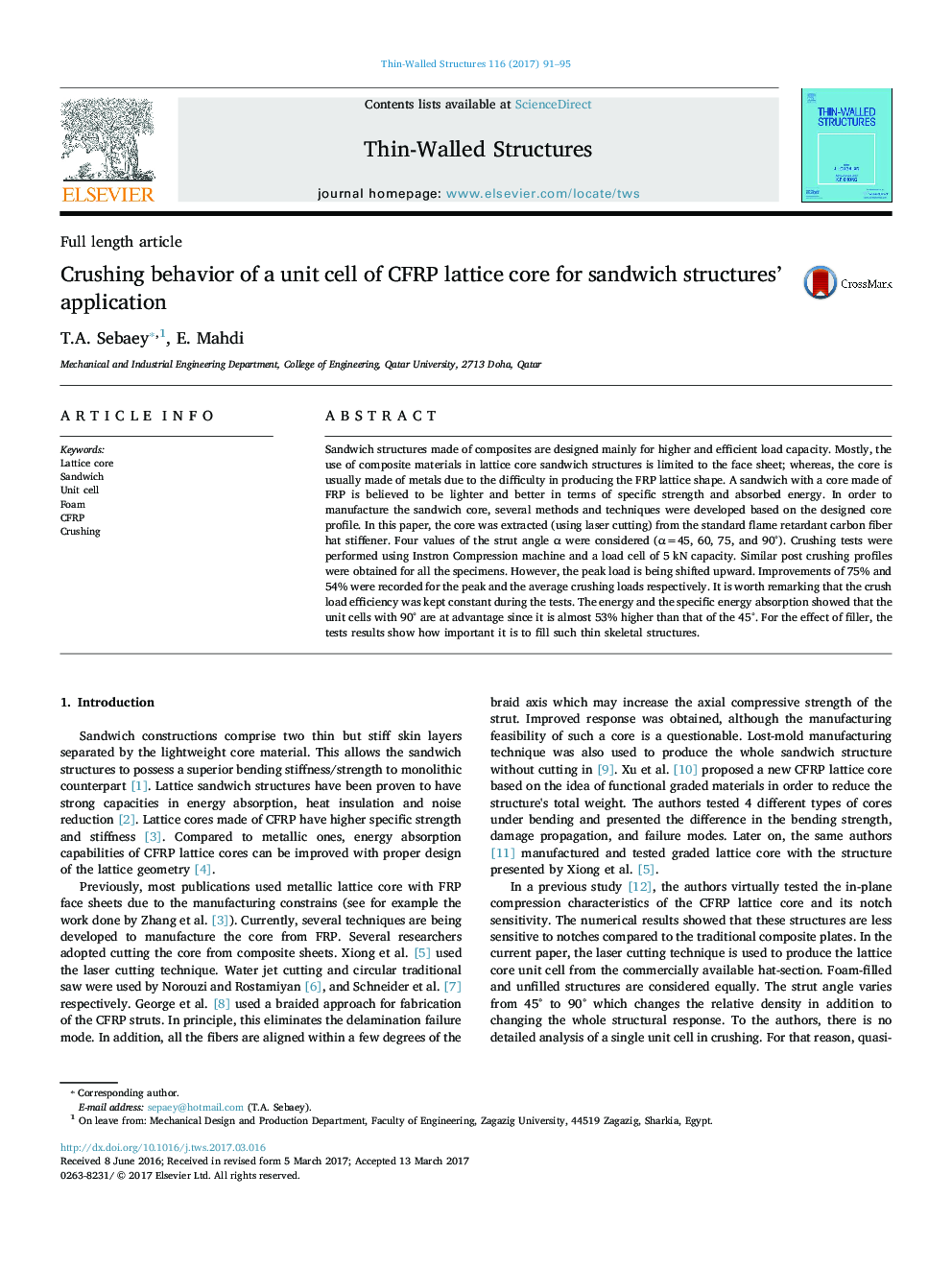| Article ID | Journal | Published Year | Pages | File Type |
|---|---|---|---|---|
| 4928591 | Thin-Walled Structures | 2017 | 5 Pages |
Abstract
Sandwich structures made of composites are designed mainly for higher and efficient load capacity. Mostly, the use of composite materials in lattice core sandwich structures is limited to the face sheet; whereas, the core is usually made of metals due to the difficulty in producing the FRP lattice shape. A sandwich with a core made of FRP is believed to be lighter and better in terms of specific strength and absorbed energy. In order to manufacture the sandwich core, several methods and techniques were developed based on the designed core profile. In this paper, the core was extracted (using laser cutting) from the standard flame retardant carbon fiber hat stiffener. Four values of the strut angle α were considered (α=45, 60, 75, and 90°). Crushing tests were performed using Instron Compression machine and a load cell of 5 kN capacity. Similar post crushing profiles were obtained for all the specimens. However, the peak load is being shifted upward. Improvements of 75% and 54% were recorded for the peak and the average crushing loads respectively. It is worth remarking that the crush load efficiency was kept constant during the tests. The energy and the specific energy absorption showed that the unit cells with 90° are at advantage since it is almost 53% higher than that of the 45°. For the effect of filler, the tests results show how important it is to fill such thin skeletal structures.
Related Topics
Physical Sciences and Engineering
Engineering
Civil and Structural Engineering
Authors
T.A. Sebaey, E. Mahdi,
